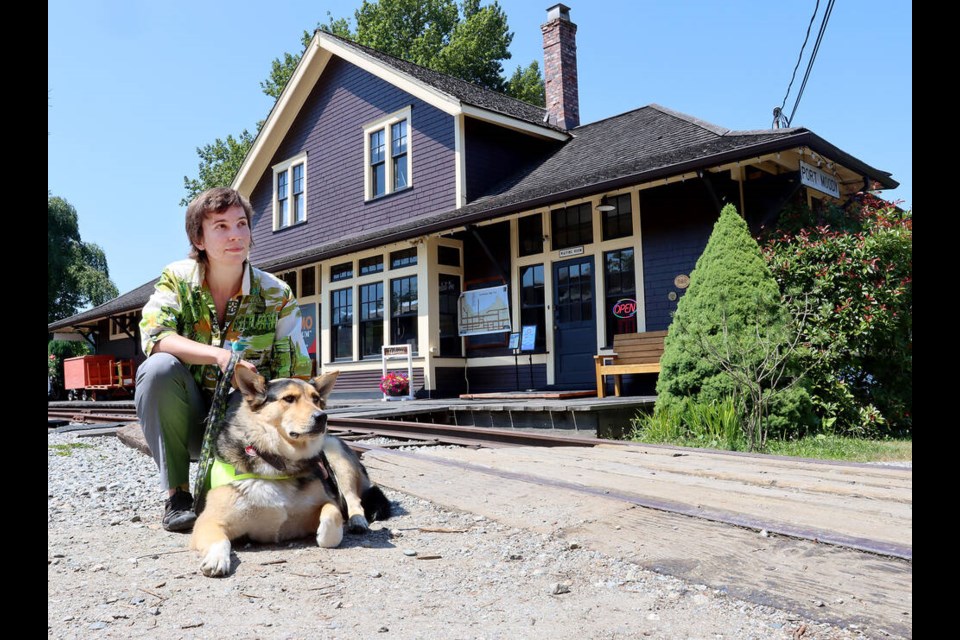POMO Museum has a new name and look.
It also has a new director.
Farmer Chomitz has been charged with carrying the former Station Museum into a future that still respects the facility’s railway heritage, but through a contemporary lens of reconciliation and accessibility that shines on Port Moody’s role in the burgeoning region that surrounds it.
It’s a challenge, admits Chomitz, who uses the pronouns they/them.
However, Chomitz is uniquely qualified to understand and embrace the new direction.
With a masters degree in Museum Studies from the University of Leicester, museums and the role they play in forging community — especially in smaller cities — are Chomitz’s passion.
It all started when Chomitz and their family travelled regularly from their home in Cobourg, Ont., to Toronto to visit the expansive Royal Ontario Museum (ROM).
“It was like my hometown museum,” Chomitz said, recalling endless hours wandering the ROM’s halls, entranced by the stories its displays told.
A pair of four-month internships — at the ROM and at a smaller facility in Oakville, Ont. — while studying medieval history at the University of Toronto further cemented the bond Chomitz felt with collecting, preserving and sharing stories.
“The function of a museum is to educate the public and facilitate learning,” said Chomitz, whose first visit to Port Moody’s museum, a former railway station, was a bit of an eye-opener.
After stints at small, local museums in Tofino and Lillooet, Chomitz said they were impressed with the care and dedication staff and volunteers put into preserving Port Moody’s past, especially given the museum’s limited resources and the confining space of the former railway station.
But to take POMO Museum to the next step and fully realize the richness of the city’s past, it needs to burst beyond the section of rail tracks out front, spiritually and physically.
“We’re not just about the train station,” Chomitz said. “We’re a growing community. We need to tell the city’s stories to the wider world.”
Increasingly, though, those stories aren’t just about Port Moody, Chomitz said. They’re about Port Moody’s place in the world, the immigrants who helped build the city and, most importantly, its role in colonizing the First Nations who preceded it.
It’s important to recognize Port Moody’s missteps while also celebrating its achievements if the city is to forge a better future, Chomitz said.
“We have a role to facilitate intergenerational communication.”
An accessible physical space that is welcoming to all visitors is key to making that happen, said Chomitz, who’s on the autism spectrum and has an assistance dog, Ianto, at their side to help them navigate some of the unique challenges of their day-to-day life.
That means everything from making improvements to the ramp that goes over the railway tracks so visitors with mobility challenges can experience the museum more easily to reconsidering how information is presented so neurodiverse members aren’t overwhelmed. Even admission policies that might exclude visitors who aren’t able to pay must be examined, Chomitz said.
It’s all about creating an environment that fires up curiosity, surprise and exploration and helps residents gain an appreciation for their place in the city’s evolution.
After all, a visit to a museum shouldn’t be a chore, Chomitz said, it should be a “lasting, joyful experience.”



